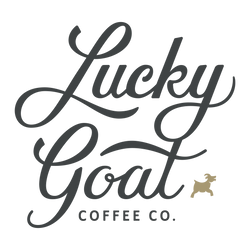Espresso: A short drink with a long history
If you’re a frequent visitor to our cafes, there’s a good chance that your favorite coffee drink contains espresso. In fact, based on the sales numbers across our locations over the last year, that chance is 51%. So, what is this short little drink that has captured us all? It’s got quite the back story, so get your latte, cappuccino, or americano ready, and cozy up for its long history.
Espresso is a little hard to define, depending on who you ask. One thing it’s not, however, is a type of coffee bean. The beans that make up an espresso blend are just like those used in blends intended for other brewing methods. When a coffee is described as an espresso blend, it usually is the producing roaster’s favorite coffee to brew as espresso. These blends will be balanced and sweet and hold up well to steamed milk.
Put simply, espresso is an Italian brewing method where water is pushed through finely ground coffee at 9 bars of pressure, resulting in very short brew times. It brews with a light brown layer called crema—a creamy foam that forms from carbon dioxide and bitter oils that are trapped in the bean. This layer is highly important to the quality of an espresso: it adds texture, viscosity, and boldness to the shot. A standard serving of the drink is short--around 2 oz in modern cafes. Per unit of volume, espresso will have more caffeine than drip coffee, but when consuming just one serving of each (2 oz of espresso or 8 oz of drip coffee), the drinks have roughly the same amount of caffeine.
The first iteration of espresso came to be in the late 1800s. This original patent of the espresso machine intended to solve what Italians thought was the number one problem for coffee: that it took too long to brew. This machine produced something that looks very different from modern espresso—short pours of filter coffee that brewed in 30 seconds or less. It didn’t have the strength or crema of the espresso we know and love; that took some innovation a little bit later. In the early 1900s, improved versions of these machines were commercialized and patented in Italy, and the something much closer to the modern drink we love started making its appearance.
Once this new drink came onto the scene, café culture began spreading into other parts of Europe and beyond. The late 1900s saw the popularization of milk-based espresso drinks in North America and an ever-evolving tasting profile. In this new wave of the coffee industry we find ourselves in, specialty coffee has taken an interest in proper extraction of espresso to highlight the profile of the coffee by itself. This industry has been marked by rapid innovation and will likely continue to change and improve with modern technology.
Here at Lucky Goat, we offer a few different types of blends that we love using as espresso coffee beans. If you are a fan of experimenting with lighter roasted coffees, try brewing a single origin that you are already familiar with as espresso—it may just be exceptional!
Looking for the perfect espresso blend for brewing at home? Browse our espresso coffee here.








